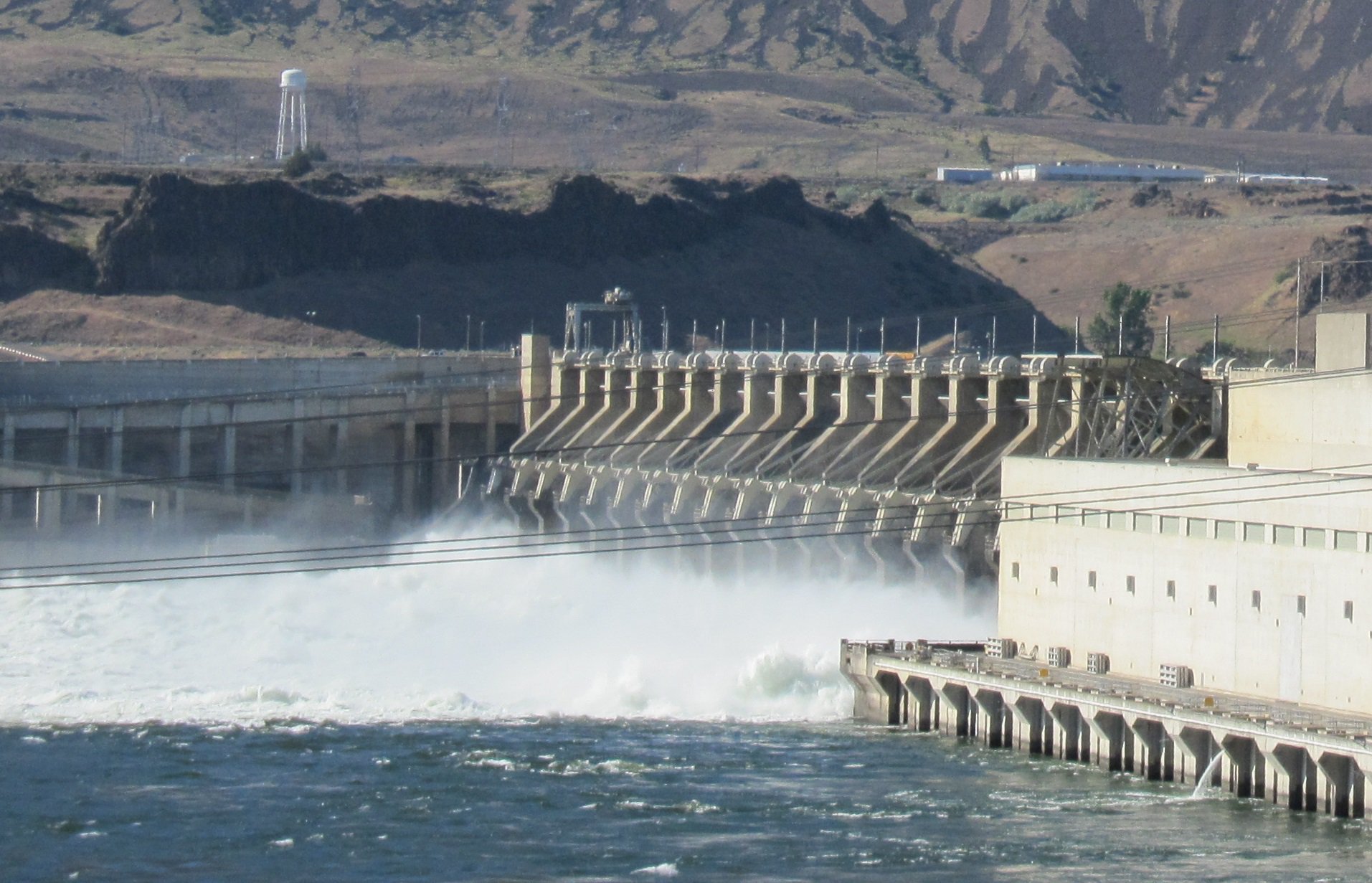Good For Fish, Good For Power
Former litigants agree on an innovative spill strategy for Columbia and Snake dams
- February 15, 2019
- John Harrison

It’s a rare and special event when former litigants can find common ground for agreement, particularly on an important biological and power policy issue that has been the subject of divisive court battles for decades. But that is what happened regarding spilling water at Columbia and Snake River dams to assist juvenile salmon and steelhead migration to the ocean in the spring and early summer, as former litigants accepted an innovative strategy last December designed to improve fish survival and reduce hydropower losses over the next three years. Water that is spilled can’t be used to generate electricity.
The strategy, called the 2019-2021 Flexible Spill Operation Agreement, has been accepted by federal agencies that operate the dams and sell the hydroelectricity, and also by Oregon and Washington fish and wildlife agencies, and the Nez Perce Tribe. When to spill and how much to spill has been the subject of almost constant litigation since the 1990s. All parties have agreed to try the new strategy beginning in April of this year, monitor its success and, as necessary, make adjustments in future years.
The strategy will be analyzed in a new environmental impact statement of operations of the Federal Columbia River Power System in 2020 and included in the 2019 Biological Opinion on hydropower operations expected to be released by NOAA Fisheries in April.
This month representatives of agencies and tribes presented the strategy to the Council.
“I have never seen a better example of collaboration and tough problem-solving on a set of issues that are so divisive,” Bonneville Power Administration Administrator Elliott Mainzer said. “We listened to each other, built trust, and eventually established a set of joint criteria to ensure salmon survival and feasible operations for the hydropower system.”
The spill strategy aims to increase benefits to salmon and steelhead without additional cost to hydropower generation by increasing spill for 16 hours a day and reducing it for eight hours. Increased spill makes more water available for fish passage, and reduced spill makes more water available for hydropower generation. The assumption is that the 16 hours of spill will capture most of the migrating fish, and that Bonneville will be able to take advantage of the eight hours of reduced spill to sell hydropower profitably, such as in the early morning and early evening hours when demand for power increases.
Currently, with the proliferation of renewable power in the West Coast wholesale power market, particularly solar power from California, power sales during daytime hours are less profitable for Bonneville, but the early morning and early evening hours, when less solar is available, remain profitable. Last year, following a federal court order to further increase spill to aid juvenile salmon and steelhead passage over the dams, spring spill was increased to 24-hours per day to the maximum dissolved gas limits set by Washington and Oregon for the federal dams. The Flex spill Agreement calls for spill levels to increase beyond the 2018 increased levels, but for 16 hours instead of 24 hours. The strategy will require Washington to increase the allowable total dissolved gas limits at the dams to 120 percent in 2019, a level Oregon already has adopted. Under the agreement, both states would increase the levels to 125 percent in 2020.
Rob Lothrop, who took part in the negotiations on behalf of the Columbia River Inter-Tribal Fish Commission, said the collaborators “needed a win for the hydropower system and a win for the fish. We set out to find a win-win.” He said that while there is “a fair amount of uncertainty with predicting fish and power effects,” the groups sought to make all parties comfortable with the technical analysis. “The result was avoiding litigation in 2019 and 2020.”
Critical to the agreement was a convincing technical analysis that under the strategy the incidence of fish “encountering the powerhouse” – passing through turbines instead of being spilled – would decrease. This is called the “Powerhouse Encounter Probability.”
“You can influence [powerhouse encounter probability] by changing spill operations” said Dave Johnson, fisheries manager for the Nez Perce Tribe. “That was the key.”
The modeling showed a dramatic decrease in powerhouse encounter probability, Bonneville’s Ben Zelinsky said, and this will be monitored carefully as the strategy is implemented, beginning next month.
Council members expressed their support and thanks to the collaborators for finding common ground to help fish with minimal impact to the hydropower system, essentially the Council’s mission under the Northwest Power Act.
“Thank you so much for your commitment, your perseverance, and your creativity,” Council Chair Jennifer Anders said. Tom Karier, the Eastern Washington Council member who will leave the Council in 2019 after serving 20 years and return to teaching economics at Eastern Washington University, called the agreement “very impressive in terms of public policy,” adding, “as I transition back to teaching at the college level I plan to use this example in my classes as a great public policy that recognizes two competing interests of salmon survival and carbon-free power and finds the right balance, really optimizes between these two.”



